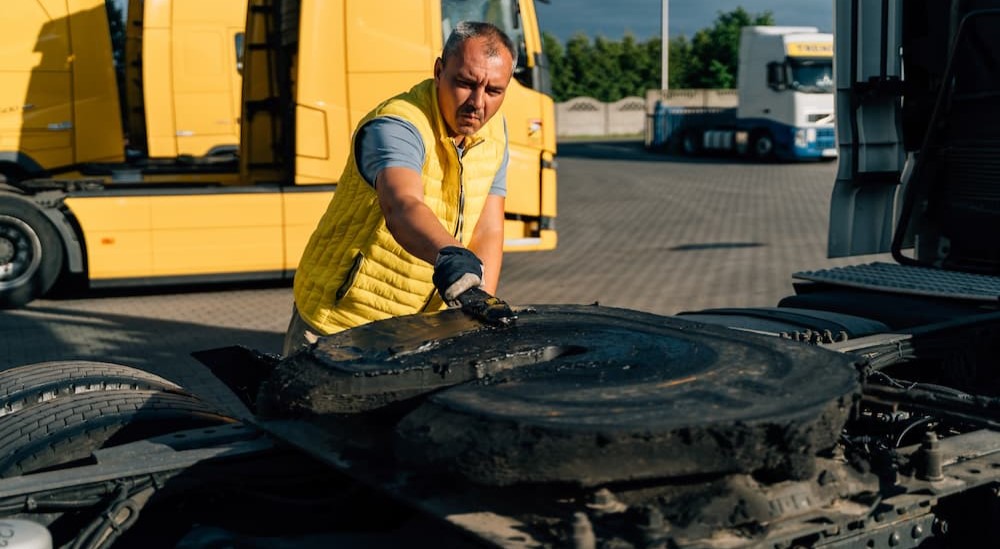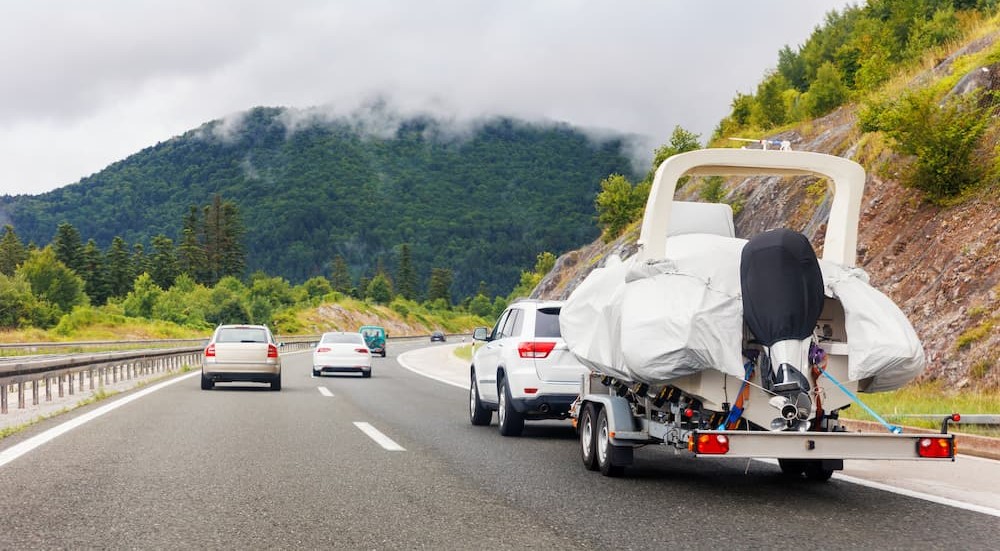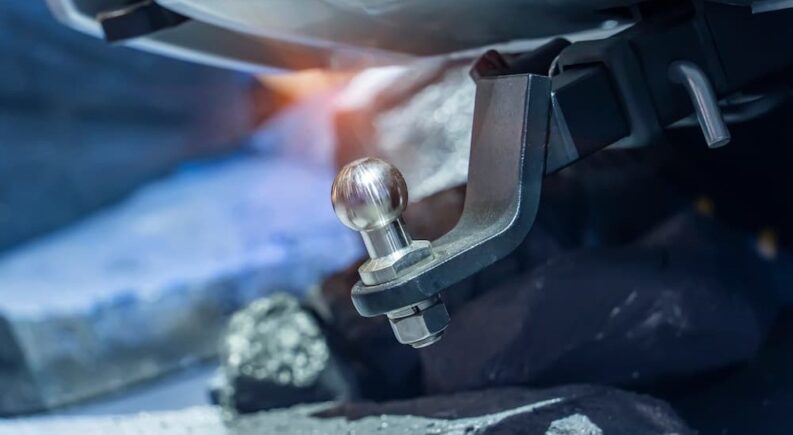No matter how much horsepower and torque a pickup truck or SUV might be able to churn out, a towing rig is only as good as its weakest link. You can invest in a robust 4WD system, an enhanced cooling system, a heavy-duty suspension, and even a model with dual rear tires, but if your tow hitch isn’t up to the task, all the upgrades in the world aren’t going to make much of a difference. It’s all too easy to neglect your tow hitch when performing routine vehicle maintenance, but this sort of oversight could potentially lead to an ill-timed failure that sees your trailer, boat, or camper rapidly disappearing in your rearview mirror. What must a driver do to keep their tow hitch in tip-top shape? Let’s review some basic tow hitch-related maintenance tasks and safety guidelines that’ll help you get the most out of your vehicle.
Inspect It
Regularly inspecting your tow hitch can help you to head off some common worst-case scenarios. While it might sound a little ambitious, we would recommend inspecting the hitch before every towing task, keeping an eye out for rust, damage, wear, or other issues that could lead to a sudden breakdown. Make sure to review every part of the tow hitch, including the hitch ball, hitch receiver, ball mount, locking pin, hitch pin, and even non-hitch components like the tongue of the trailer. A small crack, loose bolt, or bent part might not seem like much of an issue when you’re firmly parked in your driveway, but these faults could lead to some major issues when you hit the highway or take your first turn at speed. You’ll also want to crawl under your vehicle regularly and give the entire hitch assembly a good once-over while paying particular attention to the weld points. Finally, grab the hitch and put it through a little workout to ensure there isn’t any excessive play. Shake the hitch in every direction and feel for any suspicious movement. Remember, your trailer hitch is prone to a little movement, but you shouldn’t be able to budge the actual receiver by hand.
Clean It
There’s no underestimating the importance of good hygiene when it comes to your tow hitch. From dirt and grime to road salt and other debris, there are plenty of contaminants primed to compromise your towing integrity. After every towing trip, hit the hitch with a quick pass of soap and warm water, then use a brush to thoroughly scrub it. This sort of routine might sound excessive, but it’s one of the easiest ways to prevent long-term issues and is especially important after off-roading or navigating wet, wintery conditions. If you do find any rust during the inspection process, address it as soon as possible. A bottle of rust remover and a few squares of medium-grit sandpaper should do the trick. If you really want to go above and beyond, try following up with a quick spray from a can of rust inhibitor.

Lube It
A little lubrication can go a long way when it comes to preventing wear and tear between metal components, fighting rust, and ensuring an easy connection. You wouldn’t dream of running your vehicle’s engine without proper lubrication, and the tow hitch really shouldn’t be treated any differently. Start by removing any existing grease and doing a thorough visual inspection of the tow hitch and receiver. Dry the area, then grab your favorite waterproof grease or lubricant for the receiver tube, hitch ball, locking mechanism, and other moving parts. A fifth wheel or gooseneck hitch might employ a different design than your typical receiver-mounted hitch, but they’re not much different in terms of lubrication aside from the fact that some employ a lube plate designed to reduce friction without the need for regular greasing. Hit any exposed surfaces where there’s metal-on-metal contact and follow the manufacturer’s instructions for lubrication and maintenance.
Weigh It
A vehicle’s gross combined weight rating (GCWR), tongue weight, and hitch load capacity aren’t just suggestions. They’re precisely calculated figures that tell you exactly how much your ride is capable of towing. The GCWR includes the weight of the trailer itself, as well as any cargo or passengers who might be along for the ride, while the tongue weight references the force exerted on the hitch by the trailer itself. Exceeding a vehicle’s GCWR, tongue weight, and hitch load capacity can cause permanent damage to the tow hitch, as well as other important and expensive components like the brakes and suspension. The GCWR can be found in a vehicle’s owner’s manual or the sticker adhered to the driver’s side door jamb, while the hitch load capacity is usually stamped right into the hitch itself.
Store It
While some drivers are constantly calling on their vehicles to perform feats of towing strength, others tend to put their hitch into hibernation for the colder months. If your towing projects are typically limited to hauling boat trailers, campers, and other warm-weather accessories, sticking to proper storage guidelines can have a noticeable effect on the longevity of your tow hitch. Storing your tow hitch ball in a dry area for the winter will limit contact with wet, cold weather and the corrosive road salt that comes with it. The trailer hitch is a little difficult to put into storage as it’s securely welded to the vehicle, but protecting it with a hitch cover can certainly help to prevent bad weather from leaving its mark.
Align It
Neglecting your vehicle’s alignment is one of the easiest ways to up your chances of a hitch-related accident. When the tires fall out of alignment, a vehicle is prone to the type of uneven wear that can put undue stress on vital components. The very act of towing tends to accelerate misalignment, so if you’re regularly using your truck or SUV to haul heavy loads, you should stick to a pretty strict maintenance schedule. Experts generally recommended having a wheel alignment performed every 6,000 to 10,000 miles or about once every other oil change. A dedicated towing vehicle might need to tackle the project a little more often.
Power It
Turn signals, brake lights, and other warning lights are an essential part of automotive safety, especially when you’re towing a larger trailer or camper that might obscure your view of trailing vehicles. Most trailers are built with their own brake lights and trailer brake controllers that tie into a vehicle’s electrical system through a connector on the tow hitch that requires regular maintenance and inspection. You should always perform a brake light test before setting off on your next towing journey. Give the entire system a once-over when you first connect your tow hitch for the season. Be wary of any loose electrical connections, rust, or corrosion that might have taken hold when the hitch was in storage, particularly if it’s been kept in an area that’s home to rodents or any other creatures that might conspire to chew through your wiring.

Fifth-Wheel and Gooseneck Hitches
Offering a capacity upwards of 30,000 lbs, fifth wheel and gooseneck hitches are perfect for those looking to take on heavy-duty towing jobs. That said, they do require a little extra attention when it comes to regular maintenance. Lubrication is key, so make sure to hit all the high-friction components like the yoke tips, cam profile, lock jaw, throat, and pivot points with plenty of water-resistant lithium grease, You’ll also want to lubricate the kingpin lock and test it to ensure it’s entirely functional before setting off on your journey. Unlike traditional trailer hitches that are affixed to the back of a vehicle, fifth wheel and gooseneck hitches are mounted directly to the bed of a pickup. This increases a vehicle’s towing capacity and reduces available cargo space, though a gooseneck hitch tends to occupy less real estate than the larger fifth wheel design. These heavy-duty hitches also require drivers to drill into their truck’s cargo bed liner, compromising its waterproof nature and necessitating occasional replacement. Most manufacturers recommend replacing the truck’s bed liner every 30,000 miles and checking in on the bracket liner every time the vehicle is serviced.
Keep on Towing
With the right maintenance routine, there’s no reason that a tow hitch shouldn’t last for a decade or longer. The ball mount is a different story, as it will typically need to be replaced every five years, but it’s easy to buy yourself a little time by practicing some good habits. Again, these recommended maintenance and replacement schedules depend on your towing history. If your vehicle largely serves as a daily driver, you might be able to get away with a less intense approach, but the same can’t be said for hardworking fleet vehicles or those that spend the summer crisscrossing the country with a weighty camper in tow. Lubrication, inspection, alignment, and other basic maintenance tasks are all important, but good driving habits are also key. Whether you’re towing a small utility trailer, a fishing boat, or a team of thoroughbreds, remember to drive slowly, maintain plenty of distance between yourself and other vehicles, and account for the ways in which a heavy trailer can alter a vehicle’s cornering and braking ability.

